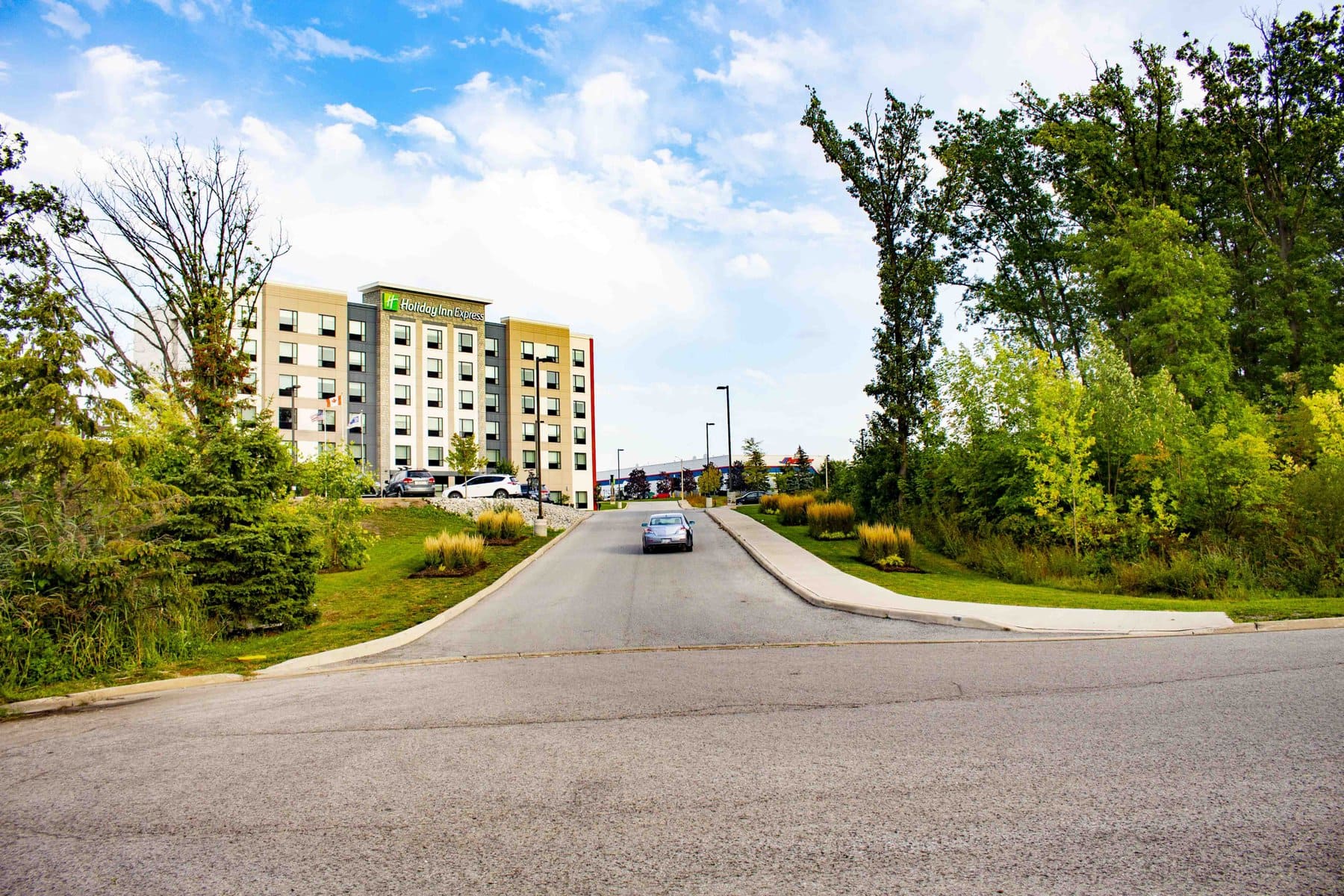The issue of a roadway illegally built on conservation land in Glendale may be resolved, but it raises questions about what the town can do to protect the natural environment.
Niagara-on-the-Lake council endorsed a zoning amendment on Feb. 27 to retroactively legalize an illegal parking lot and private roadway.
The road work was done in 2018 by developer Vrancor to expand the parking lot for the Holiday Inn Express and Staybridge Suites hotels off York Road, near the QEW in Glendale.
How it all happened and why it took more than five years to resolve remains a bit of a mystery.
The town now says the work was done before the council of the day could approve it. What’s not known for sure is if council at the time would have approved it.
“This was part of their phase two. And they thought that that had been approved when it had not been approved. So they just went ahead and did it,” Coun. Sandra O’Connor said in an interview.
Vrancor president Darko Vranich, whose name is on the zoning application approved by council, did not respond to messages before deadline.
Lord Mayor Gary Zalepa said he thinks the unapproved work was likely a mistake in the process.
Now, rather than fining the developer, the town is requiring that Vrancor plant twice as many trees and shrubs as it destroyed.
They’ll be planted at a nearby site to offset the loss of the conservation land that was paved over.
This is a process that’s called offsetting.
“I’m normally not a fan of offsetting. I don’t think it works,” O’Connor in an interview.
“You can’t create the same environment, particularly if there are any rare species.”
Coun. Gary Burroughs agreed.
“Typically, when you’ve got an environmental area, you can’t just move it,” he said.
But developers attempt to do just that, when they plant fresh trees elsewhere to compensate for the losses caused by their projects, he said.
“You can’t replace a tree, if you’ve cut it down illegally,” Burroughs said.
Zalepa said he was satisfied with the recommendations staff made in February.
With respect to development proposals, he said there was a “good process” in place for staff to recover lost tree growth.
But he also said he’d like to see council’s desire to protect and expand the tree canopy better reflected in policy.
The current tree bylaw is a “bit of a failure,” he said.
O’Connor said she remains concerned about impact on wildlife in the conservation area, though an environmental assessment commissioned by Vrancor said no at-risk species or significant habitats were harmed in the construction.
Neither Burroughs nor Zalepa were concerned the town was setting any legal precedent in its handling of the situation.
“What we need to do is fix what’s wrong and move ahead doing it correctly in the future,” Burroughs said.
“I think there’s some responsibility on both sides to prevent it from happening in the future,” he added.
But Zalepa said he did not think the situation was “identifying any broad policy needs.”
“It’s not something that happens a lot. So, I don’t think it’s a chronic issue.”










